Thursday, July 1, 2010
Reflections
Also these blog has allowed me to assimilate the knowledge i have learnt in school and manipulate to fit a specific industrial situation. This is very important learning point as despite having the knowledge, it is pointless if the we are not able to put it to practical use.
Another learning point I have learnt is that factors that affects our choice greatly in business in terms of the sanitizing products and equipments; such as costs. As the sanitizing and detergents are costly hence the rationale and choice made have to be economically sound.
Personally, I felt that the blog overall did a good job especially in the photo gifs that help provide pictorial descriptions to our points and as well as the details on the specific cleaning operations to the detergents and sanitizers available out there.
However, there could be better improvements. Such as giving more specific information related to the hazards and consequences to the business for not upholding good hygiene standards.
Vincent Kuan
Reflections
Although the blog is not very in depth as compared to what the other groups that have done with their blogs, I feel that this blog teaches you the basics of knowing what one should and should not do and the methods of doing things. The blog can be further improved on with more details added onto what we issues we have raised.
- Natasha
Reflections
Stephen Lim
This experience of using the blog to educate my friends has let me understand the usefulness of such tool to spread the awareness of personal hygiene and also the cleanliness of the areas. From my point of view, i personally enjoyed the process of doing this blog, as not only we learned more useful information about hygiene but also the pictures and videos taken is somewhat interested and useful for people to know, however as compared to the other blogs, i can tell differences in the standard of the blog, as ours is more of a general post, whereas there are people who have did a more personal, and insight blog, that really teaches the hygiene to a insight work, which really open my knowledge more. Also, learning about the detergent and sanatizers, the cleaning up of a salad bar, really is comparable to other type of different places, as due to the differences in tools used, for example not being able to use some sort of sanatizers due to its intensity, which really makes me understand the need of different type of such tool.
Perry Lu
Reflections
-Shie Hong
Sunday, June 6, 2010
Our Bibliography
About-personal-growth.com Copyright © 2005-2010
http://www.about-personal-growth.com/personal-hygiene.html
Section VII-Establishment: Personal Hygiene
FAO Corporate Document Respository
http://www.fao.org/docrep/w6419e/w6419e03.htm#section vii establishment: personal hygiene
Food Safety: Introduction to Personal Hygiene
ConnecXions®
http://cnx.org/content/m33042/latest/
Basic Elements of Equipment Cleaning and Sanitizing in Food Processing and Handling Operations
University of Florida IFAS Extension Solution for Your Life Copyright 2009
http://edis.ifas.ufl.edu/fs077
Alkali Cleaners
Doityourself Copyright © 1995-2010
http://www.doityourself.com/stry/alkali
Choosing The Proper Sanitizer or Disinfectant
Regulatory and Environmental Consulting Copyright © 1998
http://www.schiff-consulting.com/choosing.html
Type of Detegent
eHow How to do just about everything. Copyright © 1999-2010
http://www.ehow.com/facts_5883205_types-detergent.html
Cleaning Manual
After the trash has been taken out, wash your hands and proceed to collecting all the items/equipments that do not belong to where they are and placed them back to their original spot so that when you clean up the kitchen, it will be easier and the kitchen will be more tidy.
After all the tidying is done, it is time to clean the countertops, appliance and the sink with a sponge and the selected dishsoap your company has chosen. Rinse off all the soap with hot water at around 95 Degrees Celsius because using hot water helps to lift away the extra dirt that is left on the table and it can also help kill bacteria and help get rid of the grease that is on the table.
Use a dishwashing gloves to rub the table with the hot water so as to protect your hands from being burned.
As the water that is being used is very hot, it will dry very quickly and it will not leave any spots and it will be streak free thus using hot water is a benefit. Do the same for the appliance and the sink.
After which, sweep and mop the floors and continue by washing down the sink by pouring some baking soda with warm water so as to freshen it. After that, clean the trash bin cause there might be a tear in the garbage bag and the food or some liquid might leak out.
When all the washing is done. Sanitize the kitchen using a sanitizer for eg. peroxyacetic acid and rinse the places that you have sanitize to ensure that the place is clean and free from the sanitizer.
When all is done, throw all the used rags into a bucket and send them into the washer and use a dryer to dry them.
Detergent and Sanitizers.
Detergents are chemicals used in the food industry to remove food soils and stains during the cleaning process.
What are Sanitizers?
Sanitizers are chemicals used on organic or food handling equipments to REDUCE bacterial count to safe levels from a public viewpoint.
What is the difference between Detergents and Sanitizers?
The main difference between detergents and sanitizers are:
• Detergents are used to clean up food soil or stains from a surface while sanitizers are used for keeping bacteria count at a safe level on surface or equipments
• Sanitizers tend to be used in the form of aerosols (spray form) as it is usually used on surfaces and surface of equipments, therefore its more cost effective. While detergents are used at higher concentrations to removes stains thus it tend to be in a concentrated chemical form
Therefore, sanitizers and detergents are used hand in hand.
What kinds of detergents are available
• Alkaline
- Alkaline is the strongest at removing food soils however, due to the chemical compositions it is used only on hard surfaces like floor and wall tiles as it may corrode or cause damages to metal equipments and hazardous to human skin. Used mainly for cleaning grease stain on floor or wall
• Acidic
-Acidic detergents are good for removing mineral salts that crystallize around equipments.(White Scales that build up around metal taps)
• Neutral
-Neutral detergents are the most commonly found detergents in an household, it is good for light duty cleaning like food soils from burnt food.
What types of Sanitizers are available
• Chlorine (Chlorine Dioxide)
-Corrosive in nature may cause irritation to skin and effective in most pH environment, inactivated by organic materials; cheapest
• Iodophors
-Corrosive, Does not irritates the skin, not effective at all pH except neutral(5-8) ; Expensive
• Quaternary Ammonium Compounds
-Non Corrosive, Does not irritates the skin, effective in most pH conditions ; Moderately expensive
• Acid Anionic
-Slightly Corrosive, Slightly Irritates the skin, effective only at acidic pH; moderately expensive
• Alcohol
- Non Corrosive, Does not irritates skin, effective at neutral pH; moderately expensive
• Peroxyacetic Acid
-Slightly corrosive, Does Not irritates the skin, effective at most pH conditions; moderately expensive
Recommended Detergents for a Salad Bar
At the end of the day when washing utensils and equipments that handles food. It is recommended that you use the neutral detergents to clean and remove any food soils. As Neutral Detergents are firstly cost effective for the cleaning power for the nature of food stain it used on. Examples for neutral detergents would be common dishwashing detergents like MaMa Lemon or UIC.
However, for equipments like the deep fryer. The nature of the food soils will tend to be high in grease. Hence it is recommended to use alkaline detergents as it has the highest cleaning power to provide an emulsion that will degrease the oil stains from the deep fryer. Examples of alkaline detergents would be degreasers for this scenario.
At the end of every day where service and operations ceases, the kitchen has to do a full clean down operations, hence during this operations it is recommended to use the strong alkaline detergents to clean hard surfaces such as floor and wall tiles. Examples of strong alkaline Detergents are detergents contain caustic soda as an ingredient or sodium hydroxide. Although these detergents do not come cheap, it is essential for the business in a long run and the usage is only once a day at specified concentration (depending on the size of area to be cleaned). Hence in the long run it is not expensive and can be seen as a investment to keeping the business safe.
Sanitizers recommended for a Salad Bar
When starting up or preparing ingredients sanitizing is important as this step prevents many food borne illness and out breaks. Thus when sanitizing it is recommended to use an alcohol sanitizer (preferably spray) as it is highly evaporative and alcohol have good cleaning power and it is not messy. As it does not requires rinsing. Examples of alcohol aerosols are alchoquats.
At the end of operations day, when everything is cleaning down, fabrics such as table cloths and aprons can be soaked in chlorine based sanitizer such as Chlorox as such fabrics are constantly in contact with food surfaces hence over the course of the day it would pick up numerous bacteria which will be trapped among the fibres. If not sanitized properly bacteria can be transferred to food surfaces or even worst food itself and contaminating it. Hence chlorine based sanitizers are recommended firstly for It’s cost effectiveness and it’s ability to still function in wide range of pH.
Hand Sanitizers may also be included for customers who just came into the restaurant, which should be placed near the sink. Hand sanitizers comes in different form, there those which does not require rinsing like those alcohol sanitizers.
Saturday, June 5, 2010
List down essential components of a successful cleaning program
Describe practice to ensure personal cleanliness
To ensure personal cleanliness, one must understand what must be done to prevent any bacteria or germs in invading the food.
1. Hand washing
Hands must be washed as hands are the direct tools used to handle the food. Hands should be washed:
At the start of food handling activities
After visiting the restroom
After handling raw food, before ready-to-eat food.
2. Protective clothing
These protective clothing is to ensure that germs will not be able to pass from clothes to food.
However, if not properly stored, it could be a source of contamination itself, due to the button fibers, dirt, etc.
It is the company’s responsibility to check that the clothing is stored under clean, hygienic conditions, and cleaned regularly.
Hair is also pose a danger to personal hygiene as the hair may fall into the food, therefore hairnets or hats are usually provided.
3. Injury exposure
When one is injured, it is the company’s responsibility to ensure that it is fully covered.
If injuries are not covered, there can be a risk that it might drop to the food and lead to food poisoning.
Even if injuries have been covered, one must be relieved of their duties till deemed as fit to go back.
4. illnesses
When one is sick, one should report to the management.
As if one is found to be a carrier of disease or illness, there is a high chance that it can be transmitted to the food. One should carry out a medical examination
5. Personal belongings.
Items such as jewelry, watches, pins should be taken off before entering food handling area.
There items can pose a danger as they harbor dirt and bacteria, that can be transmitted to the food itself.
6.Personal Behavior
Behavior must be self restricted if it could result in contamination of food.
E.g. Smoking, spitting, chewing, sneezing, coughing openly, licking of fingers and biting of fingernails.
Rationale of having good personal hygiene
There are many reasons why personal hygiene is very important and the main reason of course is to prevent contamination that will occur when improper personal hygiene is being carried out. When improper hygiene is being carried out, bacteria present from our hands or from the skin or hair or any part of the body which comes into contact with the food will have a chance to be transferred to the food. When working at the salad bar, there will be a lot of raw food that is being handled and since the food is raw, there will be a higher risk of contamination as it is not being cooked at all and that's where personal hygiene plays and important role.
If proper personal hygiene is not being carried out, the consumers that will be eating the food will fall ill and in some worst cause scenario, death will occur. There will be a lot of complicated consequences occurring when consumers fall ill or die for example: the shop will have a bad reputation and the company will have lots of law suit and the personal preparing the food will be sacked and it will be like a chain effect whereby a lot of innocent parties will be drawn into it.
The reason why personal hygiene is important is because personal hygiene is the best way and the easiest way to prevent bacteria from contaminating or even spreading to different areas or even onto food.
Do's of personal hygiene


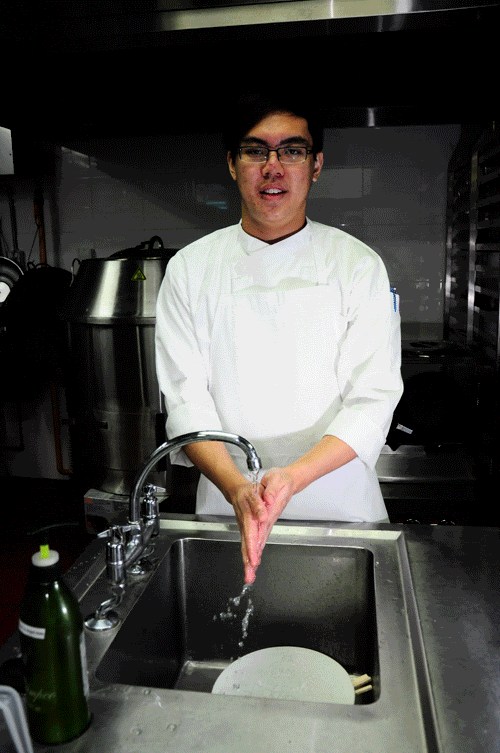
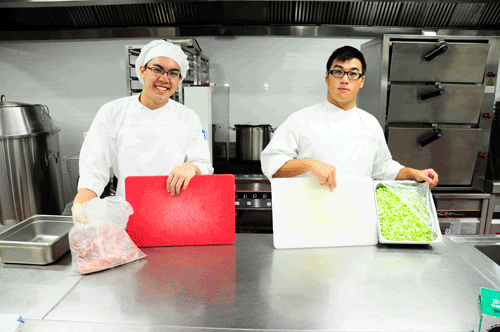
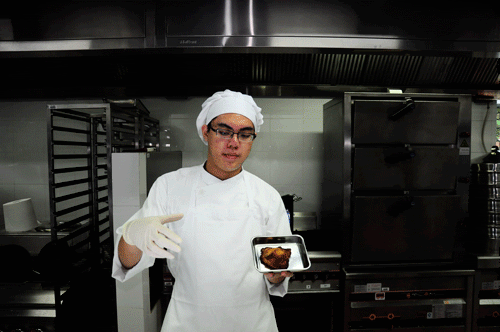
Don'ts of personal hygiene




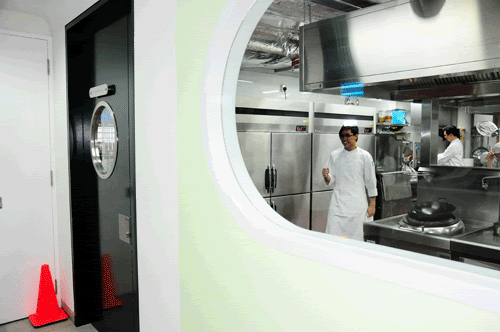
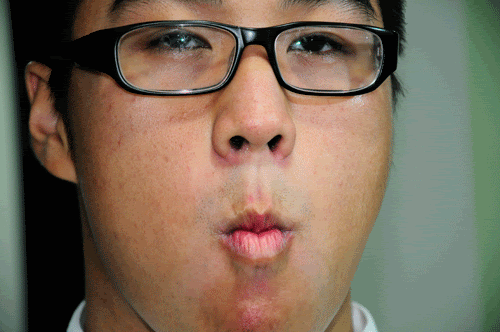
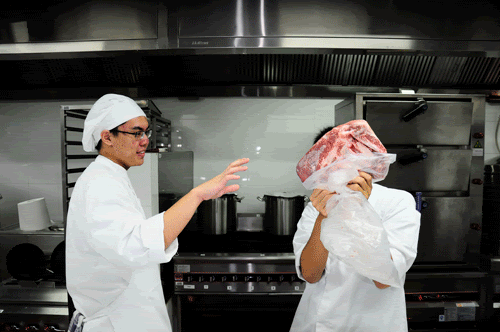
Speak or cough or sneeze if possible when preparing food
Wash hand right after sneezing if covered your mouth
·
